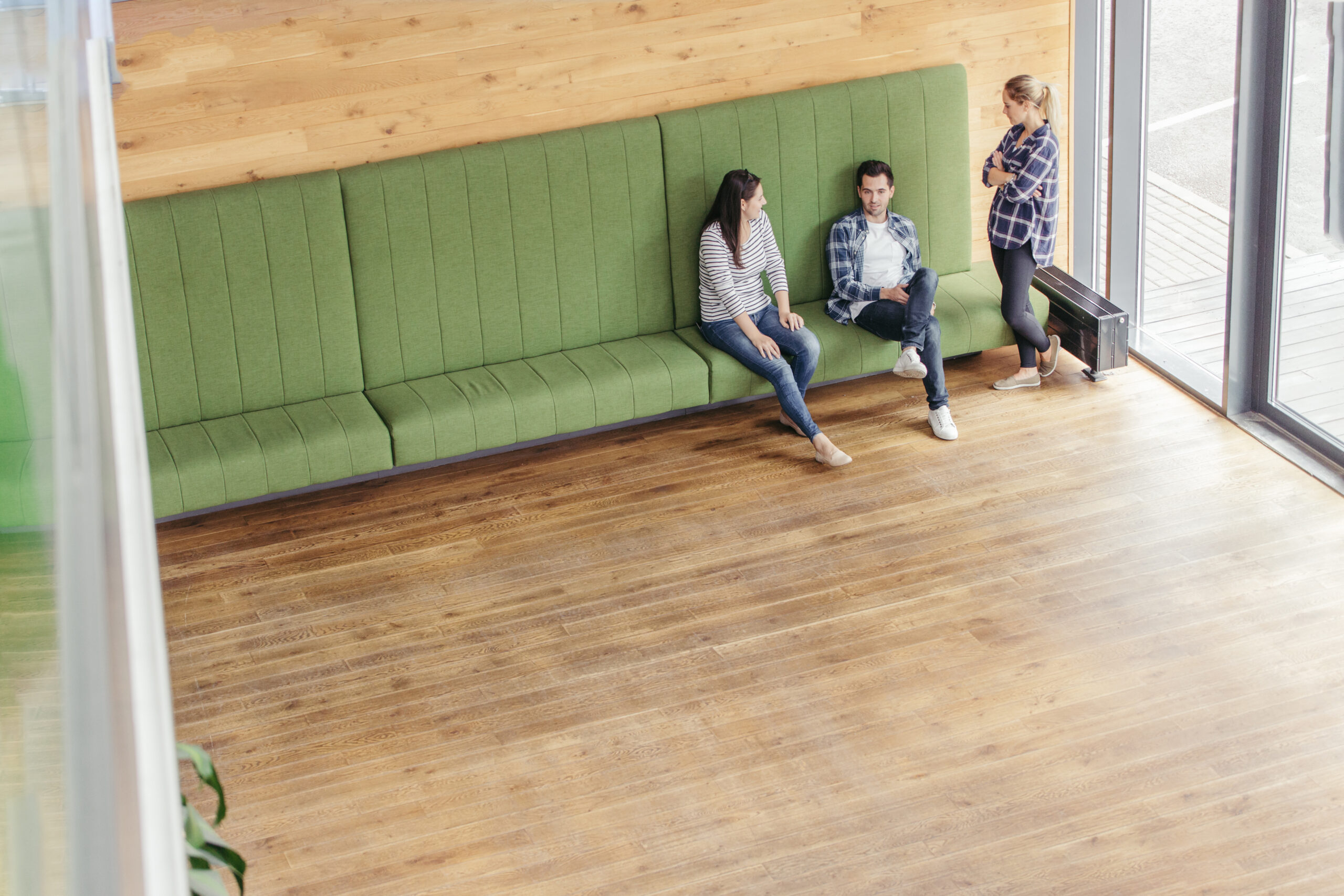The future of food spaces can cater to a huge group of patrons for not just being aesthetically pleasing but also as a sustainable and eco-friendly business. Below are some of the ways restauranteurs can incorporate certain design elements for a functional, sustainable and aesthetic establishment.
Key to sustainable but chic restaurant design are modular, adaptable layouts. Flexible spaces like these help to lower environmental damage by using movable walls, modular furniture, and multifunctional zones to meet shifting consumer demands.
Modular styles help to reduce material waste and lengthen the life expectancy of furniture and fixtures by letting restaurants change their layouts without expensive renovations. Particularly valuable for seasonal dining setups, private events, or changing customer preferences is this adaptability. Stackable seats, foldable tables, and sliding partitions allow for fast conversions from small dining spots to large, open spaces, for example. Apart from their usefulness, modular designs can be quite appealing aesthetically.
Sleek, modern furniture in sustainable materials like bamboo or recycled plastic earns eco-awareness with current beauty. Moreover, this design philosophy helps to cut down on overbuilding and promotes a “less is more” attitude that fits minimalist design and environmental targets alike. By letting restaurants change service area sizes based on occupancy, flexible designs further support energy efficiency by lowering heating, ventilation, and lighting requirements.
By providing flexible, comfortable settings, this energetic approach not only lowers operating expenditures but also improves customer experience. Consumer demand for eco-friendly eating alternatives is met by modular and adaptable restaurant designs, which provide a futuristic match of environmental consciousness and creative design.
Adopting this philosophy would enable restaurants to future proof their spaces, lower waste, and provide a one of a kind, constantly changing dining experience that shows both style and environmentalism.

When it comes to having a balance between environmental awareness and aesthetics, sustainable flooring can be a huge contributor as a component in restaurant design. Restauranteurs can practice a more sustainable approach alongside creating a beautiful and aesthetically pleasing space by opting for certain materials such as reclaimed wood, bamboo, cork, and recycled tiles.
While reusing reclaimed materials helps to stem deforestation, reclaimed wood gives an inviting, rustic appeal. Known for its fast growth, bamboo is a renewable material that gives floors a sharp, contemporary look. Harvested from the bark of cork oak trees so without damage to the tree, cork offers a long wearing, flexible surface perfect for high traffic regions. Produced from post consumer glass or ceramics, recycled tiles give a modern appeal and help to keep rubbish from landfills. These products also tend to be more rugged and simple to keep beside their environmental advantages, therefore less frequent replacements are needed.
@chipotle Welcome to our new responsible restaurant, where we use renewable energy and everyone returns tabasco bottles to the drink station #chipotle #sustainability #restaurantdesign
Particularly when combined with nontoxic adhesives and finishes, sustainable flooring alternatives also help healthier indoor air quality. From a design standpoint, combining several textures and patterns such as matching bamboo with used tiles can result in a one of a kind, Instagram-worthy environment that appeals to environmentally aware customers. Moreover, selecting flooring materials obtained close to home supports local companies and helps to cut the carbon footprint linked with transit.
In keeping with the values of contemporary customers and providing lasting beauty and utility, sustainable flooring indicates a restaurant’s dedication to responsible design. Sustainable flooring is a key element that strikes a middle ground between cutting edge aesthetics and environmentalism as the hospitality sector progresses toward more eco-friendly methods.
Restaurant designs that cater in sustainability, efficiency and functionality can use eco-friendly furniture throughout the establishment setting. In this way, the restaurant does not just look aesthetically pleasing, the owners also contribute greatly when it comes to lowering any form of environmental damage while creating a restaurant that operates efficiently.
For instance, reclaimed wood tables not only stop deforestation but also give modern customers looking for genuine experiences a rustic, warm appearance symbolising. Famous for its quick regrowth, bamboo provides great choices for barstools and seats since it is strong and modern in style. Especially when designed in bright, vivid patterns, recycled plastic furniture offers a fun but conscientious feel to outside dining spaces.
Beyond material selection, modular and versatile furniture can also help restaurants to adjust spaces for many uses, thereby lowering the need for new items over time. Comfort or style is not sacrificed by upholstery created from recycled fabrics or organic textiles and this gives an extra level of environmentally friendly design. Furthermore, working with regional craftspeople to find handcrafted, environmentally friendly furniture supports local industries and cuts carbon emissions linked with long distance travel.
This dedication to environmentally friendly furniture not only matches increasing consumer demand for more sustainable practices but also creates a visually appealing story for the restaurant’s brand. By marrying creative design with sustainability, restaurants can build areas that are as practical as they are lovely. Eco-friendly furniture gives diners a distinct, chic, and guiltless dining experience and also shows a real dedication to the planet.

It is a smart move for restaurants to use energy-efficient lighting as it is often seen as a major component of sustainable restaurant design that improves both aesthetics and environmental responsibility. In such cases, restaurants can have an establishment that uses lower energy without compromising on looks and aesthetics.
Being a budget-friendly and eco-friendly option, LED lights use up to 75% less power and have a lifespan 25 times that of conventional incandescent bulbs. By letting precise control over timing and brightness, smart lighting systems even more improve sustainability by lowering unneeded power use off-peak. Open layouts, skylights, big windows, and natural daylight not only help to flood dining rooms with it but also give them a pleasant, airy feel, therefore lowering electric light dependence.
Using this approach provides a bright, inviting room which not only reduces energy costs but also enhances client experience. Restaurants could maintain a fashionable look by including statement lighting such as pendant lights, chandeliers, or retro-inspired LED bulbs that adds character without sacrificing energy. From industrial chic to minimalist sophistication, sleek modern brushed metal, matte black, or warm brass fixtures would complement many interior designs.
Furthermore, dimmable LED lights offer flexibility for restaurants to change from bright daytime dining to a more intimate, warm evening scene. Restaurant that give energy-efficient lighting a top priority will lower their environmental impact and enhance their design, therefore showing that nowadays’ dining areas may effortlessly have sustainability and style intact.
Including recycled materials into restaurant design helps one artistically combine environmentalism with style. Restaurants can lower their environmental impact while constructing a beautiful, distinctive room by using reclaimed wood, recycled metal, and repurposed glass.
Transformed into tabletops, counters, or wall paneling, for instance, reclaimed wood brings food and character with its natural grain and aged patina. This not only saves perfectly good materials from heading to landfills but also lowers the need of new resources being harvested. Decorative light fixtures, signs, or bar decorations can be made from recycled glass and metal, giving an industrial-chic look that appeals to contemporary patrons.
Beyond looks, using these resources gives a persuasive sustainability narrative that matches the increasing consumer need for environmentally friendly restaurant meals. Furthermore, every reclaimed item usually has a story — whether it is wood rescued from an old barn or metal from a retired factory; thus, providing patrons a means to start a conversation and improving the brand narrative of the restaurant. Including recycled components doesn’t mean compromising durability or quality; many of them are very strong and perfect for a lot of use.
Moreover, mixing modern design elements with repurposed goods gives a harmonious, eclectic style that seems both but therefore. Adopting reclaimed and recycled materials helps restaurants to not only lower their carbon footprint but create a unique dining environment that shows dedication to sustainability without sacrificing elegance.

Need help with interior design? I-dzine is your answer to it. We are experts in transforming space from virtual to reality. Our expertise in renovation design, oversight, and management ensures that your property is well-designed. We relentlessly focused on delivering meticulously created, beautiful, functional designs.